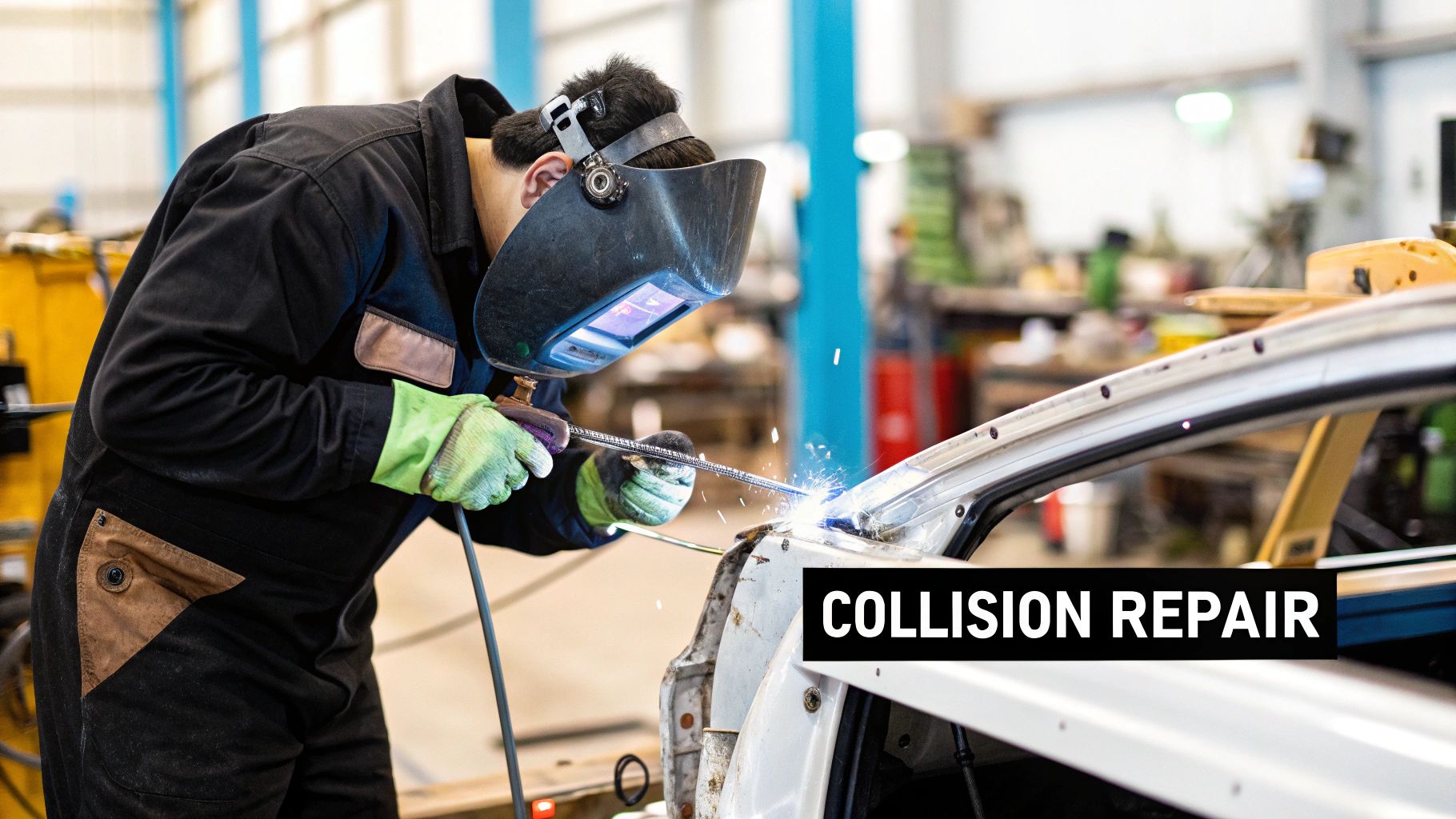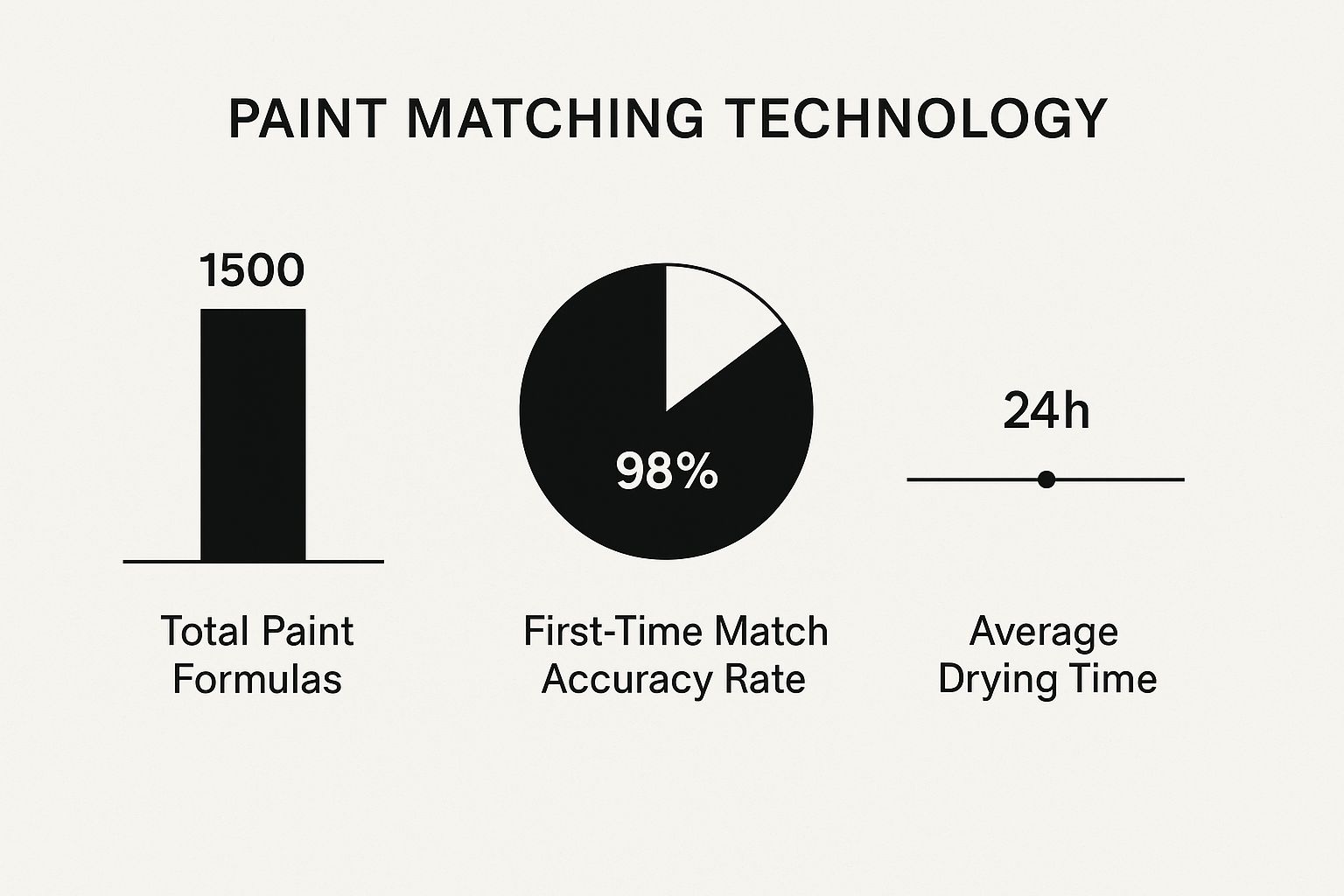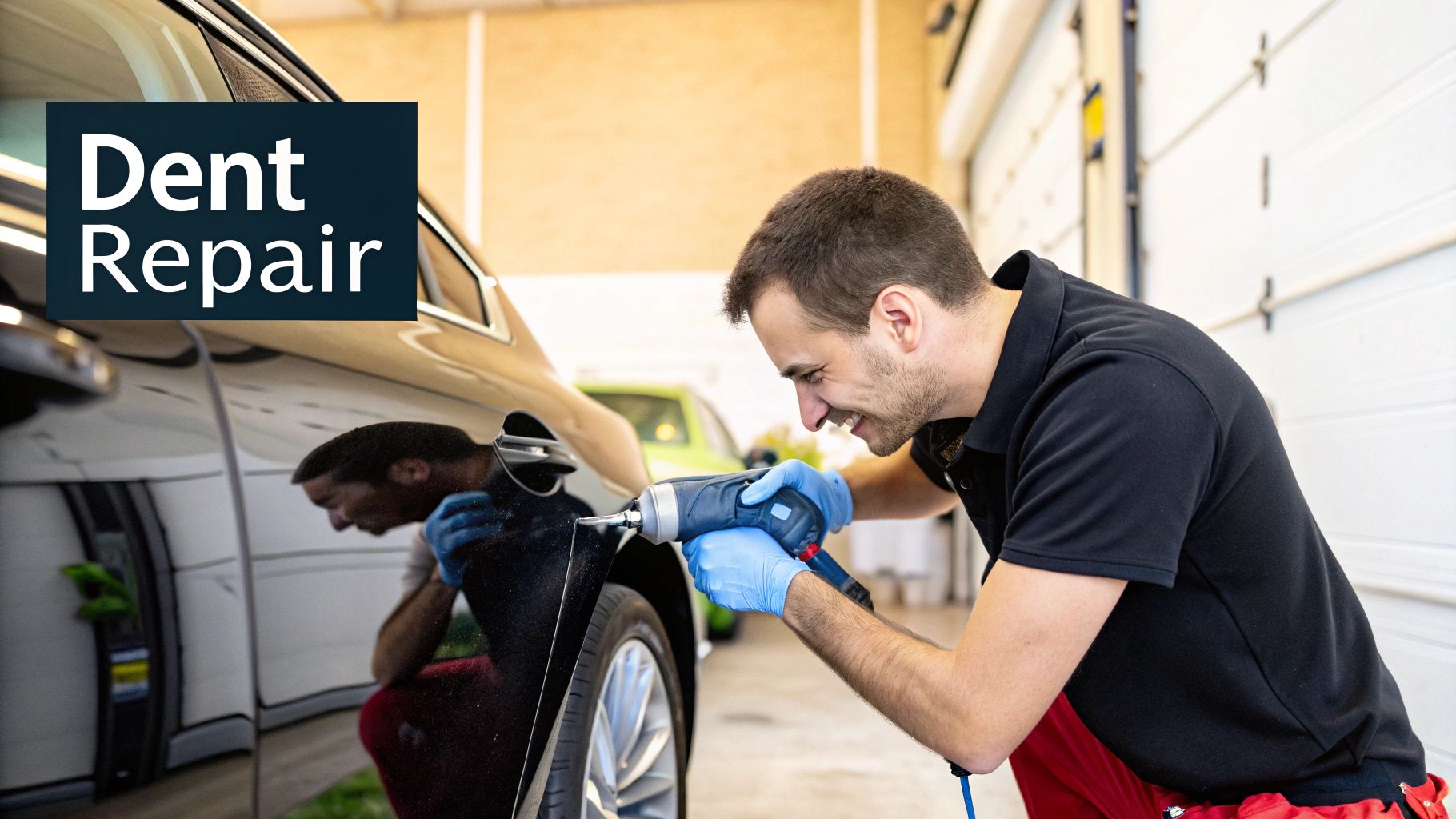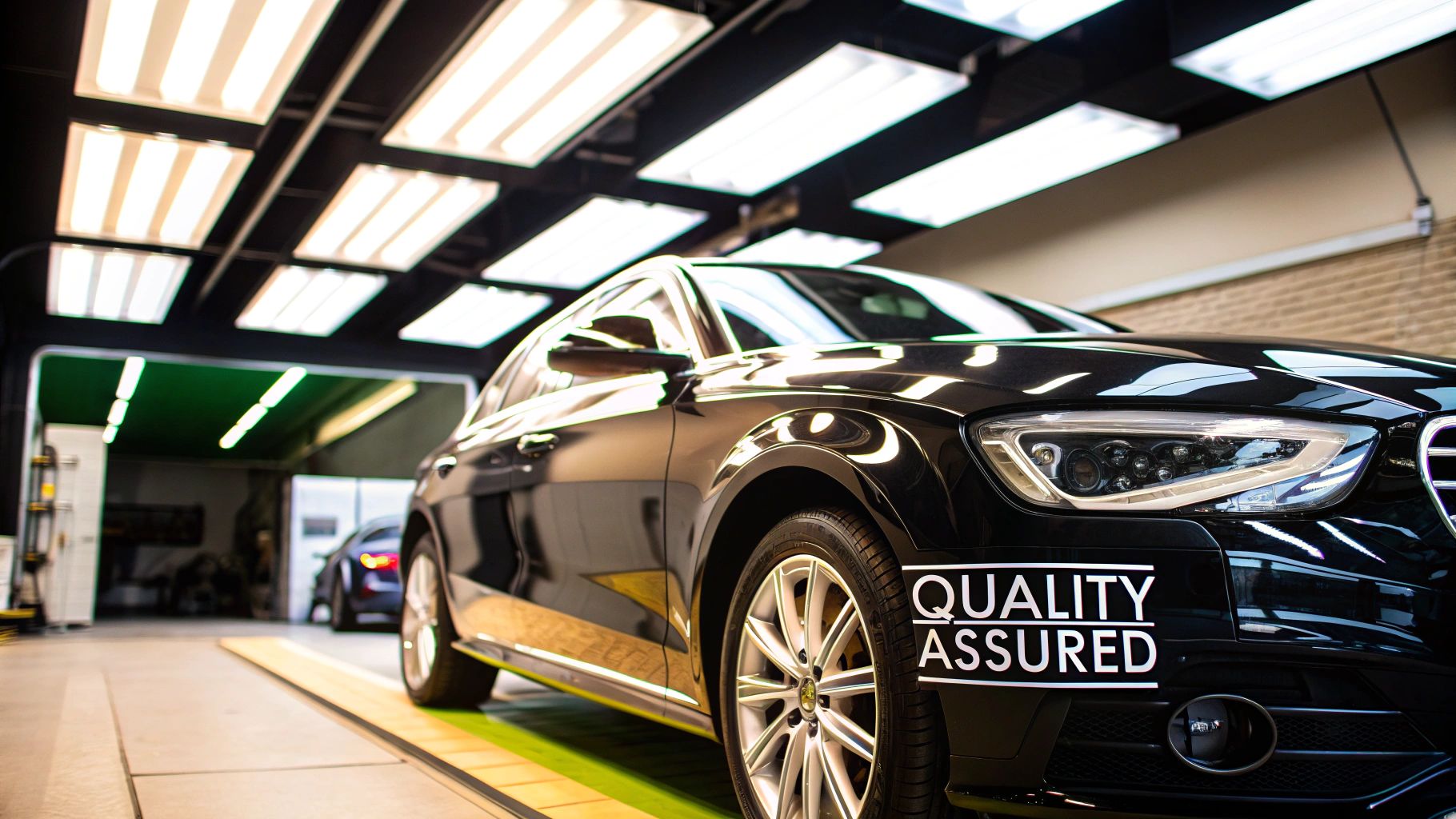A Guide to Bedford Body Services and Vehicle History
- coledem
- Jul 24
- 13 min read
When you hear the term Bedford body services, it’s a nod to a huge part of British motoring history. We're talking about the design, manufacturing, and custom builds that came out of Bedford Vehicles, an iconic British brand that was once the undisputed king of the UK's commercial vehicle scene.
For decades, Bedford built the tough, no-nonsense bodies for everything from your local delivery van to heavy-duty military lorries. They were, in a very real sense, the backbone of British industry.
What Were Bedford Body Services?
For anyone who remembers the roads of 20th-century Britain, the name 'Bedford' immediately conjures images of those sturdy, dependable lorries and vans. They were everywhere. When we talk about Bedford body services, we’re referring to the actual work done by Bedford Vehicles (a part of Vauxhall Motors) to create the main structure that sat on top of their rolling chassis.
This wasn't just about putting a generic box on a set of wheels. It was a proper craft, involving detailed design and construction to meet very specific demands.
Think of a vehicle chassis as a bare skeleton. Bedford's genius was in creating the 'skin and muscle'—the body itself—that turned that skeleton into something genuinely useful. This could be anything from a simple panel van for the postman, a rugged flatbed for a builder's yard, or a highly specialised vehicle for the army or a utility company.
From Standard Models to Custom Builds
Bedford had a smart, two-pronged approach. On one side, they mass-produced standard bodies for their most popular models. This kept them affordable and meant you could get one quickly. On the other side, they also supplied bare rolling chassis to specialist coachbuilders, who would then create completely custom bodies for unique jobs.
This flexibility was the secret to their success. A small business could buy a Bedford chassis and have it fitted with a body perfectly designed for its trade. Common examples included:
Light Commercial Vans: Nimble, efficient bodies perfect for tradespeople and delivery services.
Heavy Goods Lorries: Large, incredibly strong bodies built for long-distance haulage and logistics.
Military Adaptations: Toughened, purpose-built bodies for everything from troop carriers to fuel tankers.
Utility Vehicles: Bespoke setups for the electricity board, gas companies, and old-school telecommunications crews.
The philosophy behind Bedford's body production was simple: function drove the design. Every body was built for a specific purpose, putting durability and practicality far ahead of fancy styling. It's precisely why they earned their reputation as the ultimate workhorse.
A Legacy of British Manufacturing
The story of Bedford body services is really a story about British industrial might. At their peak, the factories in Luton and Dunstable were hives of activity, building the vehicles that saw the country through the war and powered its economic boom afterwards.
While today's vehicle repairs are handled by a modern professional car body shop, the core principles of skilled craftsmanship and building for a purpose, which Bedford championed, still resonate. Looking back at this history helps you appreciate just how much vehicle bodywork has evolved here in the UK.
The Bedford HA: The Workhorse of British Utilities

Ask anyone to picture a classic British van, and chances are the Bedford HA will pop into their head. First hitting the roads in August 1964, this little workhorse quickly became a familiar sight across the UK. Its secret? It was cleverly built on the same platform as the Vauxhall Viva HA family car, which made it affordable to build and instantly recognisable.
This shared DNA meant the HA van was compact and nimble, perfect for zipping through tight city streets and navigating winding country lanes. For nearly twenty years, it was the vehicle of choice for some of Britain’s biggest names.
You couldn't miss them. Fleets of these iconic vans, often painted in bright British Telecom yellow or Post Office red, were part of the daily setting. They were the reliable backbone for institutions like the Royal Mail and British Rail, acting as more than just transport—they were necessary tools for delivering public services nationwide.
Built for Purpose: Two Payload Options
Bedford knew that a one-size-fits-all approach wouldn't cut it for business. To meet different demands, they offered the HA in two main payload versions. This simple choice meant companies could get a van that was just right for their daily jobs, without overspending on a vehicle they didn’t need.
The two main variants were:
The 6 cwt model (HAE): This was the lighter option, ideal for smaller loads of around 300 kg. It was a firm favourite for postal rounds and light engineering work.
The 8 cwt model (HAV): For jobs that needed a bit more muscle, this version could handle heavier loads up to roughly 410 kg. It came equipped with a beefier rear axle, larger tyres, and an extra leaf spring for support.
The difference wasn't just about strength. The 8 cwt model often had better interior trim and a touch more chrome, making it a smarter choice for owner-operators. By 1971, to keep costs rock-bottom for big fleet orders, the 6 cwt model was sometimes supplied with just a driver's seat as standard.
The Bedford HA became one of the most common and longest-produced light vans in UK history. An incredible over 689,000 units were built before production finally stopped in 1983. Its legacy is one of simplicity, reliability, and an amazing ability to adapt to just about any job thrown at it.
Evolving Over Time
The HA didn't stand still. As the years rolled on, it received updates to keep up with the times. In the late 1970s, the payload ratings got a rebrand: the HA 110 offered a 371 kg (818 lbs) capacity, while the sturdier HA 130 could carry 546 kg (1,204 lbs). The versatile chassis also became the base for specialist vehicles, including the much-loved Bedford Roma campervan.
The incredible long-term reliability of these vans really drives home the need for proper maintenance. For any vehicle that works hard for a living, a solid upkeep schedule is everything. Our guide on the benefits of annual car servicing details why these regular checks are so important for a vehicle's lifespan. With its simple, strong design, the HA van was a true workhorse that defined an entire era of British transport.
The Bedford OY: Supporting the Nation in Peace and War
While the little Bedford HA was busy serving Britain’s towns and cities, another, much larger Bedford was proving its mettle on the world stage. The Bedford OY lorry was a true giant of military logistics, a machine built to endure the brutal conditions of war. It started life as a commercial truck design but was quickly adapted for military service, becoming an indispensable part of the British war effort and its aftermath.
The design philosophy was simple: make it tough. Bedford understood that in the heat of conflict, reliability trumps everything else. The OY wasn't built for comfort or sleek looks; it was engineered for pure, relentless functionality. This laser focus on durability meant it could take on the most demanding jobs without a whisper of complaint, from hauling supplies to the front lines to serving as a mobile fuel tanker.
The sheer production numbers tell the story of its importance. The Bedford OY was built for the British Armed Forces from 1939 right through to 1953. During the critical war years between 1940 and 1945, an incredible 72,385 units rolled out of the Luton factory. That figure alone shows just how important these lorries were to the nation's defence. You can explore more about its history and technical details by reading about the Bedford OY’s military service.
A Tale of Two Bedfords
To truly appreciate the different roles these iconic vehicles played, it helps to see them side-by-side. The HA van was a nimble workhorse for civilian life, while the OY was a heavyweight built for the battlefield.
Bedford Vehicle Specification Comparison
Specification | Bedford HA (8 cwt) | Bedford OY |
|---|---|---|
Primary Role | Light commercial van | Military cargo lorry |
Production Years | 1963-1983 | 1939-1953 |
Engine | 1.3-litre 4-cylinder petrol | 3.5-litre 6-cylinder petrol |
Power Output | Approx. 48 bhp | Approx. 72 bhp |
Payload Capacity | Approx. 400 kg | Approx. 3,000 kg (3 tons) |
Key Feature | Compact, economical | Rugged, all-terrain |
This comparison highlights the versatility of the Bedford brand, capable of producing both the perfect vehicle for the local delivery driver and a lorry that could keep an army moving.
Technical Strength and Versatility
The OY was far more than just a big truck; it was a brilliantly engineered solution to a complex logistical nightmare. Every single component was chosen for its strength and ability to perform in the most challenging environments imaginable.
At its core was a powerful 3.5-litre, 72-brake-horsepower inline-six petrol engine. Mated to a 4-speed manual gearbox and a seriously tough rear-wheel-drive system, this powertrain gave the OY the muscle it needed to haul heavy loads across mud, sand, and rubble.
Its imposing size was perfectly suited for military transport duties:
Length: 6.22 metres (20 feet 5 inches)
Width: 2.18 metres (7 feet 2 inches)
Height: 3.09 metres (10 feet 2 inches)
Kerb Weight: 6,568 kilograms (that's about 6.46 long tons)
These dimensions made it an incredibly adaptable platform. The most common variants were the general service flatbed, used for carrying troops and cargo, and the tanker configuration, which was necessary for keeping the armoured divisions and other vehicles fuelled up and on the move.
The reliability of the Bedford OY became legendary. Its knack for keeping supply lines open during the war and its continued service in peacetime cemented Bedford's reputation for building tough, dependable vehicles for any job you could throw at them.
Just as Bedford engineering evolved, so have the services that keep modern vehicles on the road. The precision we apply to Bedford body services today is a world away from the battlefield repairs of the 1940s.

This modern data shows just how far things have come, with near-perfect paint matching and a vast library of colour formulas that provide a flawless finish—a level of detail unimaginable in the OY’s heyday.
A Lasting Legacy of Strength
The Bedford OY was eventually succeeded by the Bedford TA model, but its impact endured. The thousands of OY lorries that served during and after the war were a constant, visible symbol of British industrial might and resilience.
They represented a deep-seated commitment to building vehicles that weren't just fit for purpose but could be utterly depended on when the stakes were highest. This heritage of strong, no-nonsense engineering is a cornerstone of the Bedford story, a legacy that proudly connects civilian utility with critical military support.
The Surprising Story of the Bedford Doll: A Medical Training Pioneer

When you hear the name ‘Bedford’, your mind probably jumps straight to those tough, workhorse lorries and vans. But the name’s legacy of strong, purpose-built design stretches into a far less expected area: medical education. Far from the world of engines and chassis, the Bedford name also belongs to a unique tool that helped shape modern nursing—a life-sized training aid called the Bedford Hospital Demonstration Doll.
This was no child's toy. It was a serious piece of equipment designed to give student nurses a realistic, hands-on way to practise their craft. Before the Bedford Doll came along, practical training was a real challenge, often meaning students had to learn delicate procedures on actual patients. This doll changed everything, offering a safe and repeatable way to master the fundamentals of patient care.
Its arrival was a genuine leap forward for healthcare education. By giving trainees a safe space to build confidence and skill, it played a key role in standardising the quality of nursing care right across the country.
A Groundbreaking Educational Tool
The story of this remarkable training aid starts back in 1931. Developed by the company Adam,Rouilly, who worked with a clinical tutor named Miss Bedford from a London nursing school, the doll was an incredible feat of engineering for its day. It was built with realism at its core, boasting a life-size body, removable jointed limbs, and a distinctive papier-mâché head complete with glass eyes. You can read more about the fascinating history of this medical training doll on the Adam,Rouilly website.
The doll's 'skin' was crafted from a specially treated fabric, designed to mimic the look and feel of a human patient. For an extra touch of realism, it could be ordered with painted hair or even a wig made from natural hair. This incredible attention to detail provided nursing students with an invaluable tool for practising everything from basic patient handling to more complex care procedures.
The Bedford Doll was more than just a mannequin; it was a simulator. It gave students permission to make mistakes and learn from them without putting a living person at risk—a core principle of modern medical training that was truly ahead of its time.
This early form of simulation was key for honing the tactile skills needed for compassionate and effective nursing. It allowed students to practise patient positioning, dress wounds, and perform other duties, perfectly bridging the gap between textbook theory and real-world application.
The fact that the Bedford Doll was used widely for decades, both in the UK and around the world, speaks to its success. While it seems worlds away from vehicle manufacturing, its creation shares a core value with the lorries and vans that carried the same name: a deep commitment to functional, purpose-driven design. Just as our Bedford body services focus on vehicles built to do a job reliably, the Bedford Doll was a tool masterfully engineered to solve a critical need with precision and ingenuity.
The Cultural Footprint of Bedford Vehicles
The story of Bedford isn't just about factories and production lines; it's deeply woven into the very fabric of British life. For decades, whether you were on a city street or looking at footage from critical military operations, Bedford vehicles were a constant, reliable presence. The brand really came to symbolise a golden era of British manufacturing, one built on practical design and sheer, unwavering durability.
It was this commitment to purpose-built engineering, seen so clearly in workhorses like the HA van and the powerhouse OY lorry, that cemented Bedford as a household name. These weren't just machines; they were trusted partners in the daily life of the nation. They had a certain get-the-job-done attitude that really resonated with people. Seeing one was as common as spotting a red phone box or a pillar box.
This legacy, stretching from civilian workhorses to military stalwarts, speaks volumes about an identity built on resilience. Today, looking after the bodywork of any vehicle honours that same spirit of longevity. For modern drivers, getting to grips with the different types of car body repairs available is the first step in preserving its condition and value—echoing the durable legacy of brands like Bedford.
An Enduring Symbol of British Design
It's fascinating how Bedford's influence continues in surprising ways. The rugged, distinctive nature of its utility and war vehicles has made them a popular subject for miniaturisation. Collectors and enthusiasts often explore the world of diecast trucks and trailers to find beautifully detailed models of these historical workhorses, a real demonstration of their lasting appeal.
These models perfectly capture the essence of what made the brand so special:
Purposeful Aesthetics: The designs were never about flash; they were about function, creating a distinct, no-nonsense look that is iconic in its own right.
Recognisable Silhouettes: Vehicles like the HA van are instantly recognisable, sparking a sense of nostalgia for a particular time in British history.
A Celebration of Utility: The enduring popularity of these models highlights a deep appreciation for vehicles that were simply built to work hard.
This ongoing appreciation shows that Bedford's cultural footprint isn't just a historical footnote. It's about a continued respect for solid, dependable engineering that gets the job done.
The "Bedford" name has a surprisingly diverse legacy, connecting the industrial might of vehicle manufacturing with the quiet innovation of medical training. It proves a shared philosophy across different fields: creating practical, influential, and quintessentially British designs that solve real-world problems.
A Legacy Beyond the Factory Floor
The story even takes an unexpected turn with the Bedford Doll, an important part of this history you might not know about. This medical training tool, born from creative thinking and a focus on practical needs, shares the same inventive spirit as the vehicles. It’s a perfect example of how the principles of thoughtful, purpose-built design can be applied in completely different arenas to achieve remarkable results.
When you look at the full picture—from the HA van serving local communities and the OY lorry supporting the nation in crisis, to the Bedford Doll advancing healthcare education—you get a true sense of this unique legacy. The name 'Bedford' stands for more than just vehicles. It symbolises an era of British ingenuity, practicality, and an enduring influence that shaped both our industrial and social history. The need for reliable bedford body services back then reflects a timeless desire for quality and care that we still see today.
Got Questions About Bedford Vehicles? We’ve Got Answers

Learning about the story behind Bedford's iconic vans, sturdy military lorries, and even their unique role in medical training often sparks a bit of curiosity. It’s a fascinating slice of British motoring history. Here are some of the questions we hear most often about the brand and its enduring legacy.
Who Actually Owned Bedford Vehicles?
Bedford Vehicles started life in 1930 as a brand under Vauxhall Motors. What many people don't realise is that Vauxhall had already been bought by the American giant General Motors (GM) back in 1925. So, for its entire history, Bedford was part of the global GM family.
This connection was a huge advantage, giving them access to a wealth of engineering expertise and resources. It's why you see so much overlap between models, like the famous Bedford HA van, which was cleverly based on the Vauxhall Viva car. For all intents and purposes, Bedford was GM's go-to brand for commercial vehicles here in the UK.
So, Why Did Bedford Stop Making Vehicles?
It was a tough time for British manufacturing. By the 1980s, the market was flooded with fierce competition from European and Japanese brands, putting immense pressure on homegrown companies. At the same time, major military contracts, which had long been a reliable source of business for Bedford's heavy lorries, started to dry up.
Faced with these economic headwinds, General Motors made the difficult call to wind down Bedford's commercial vehicle production in 1986. While the van plant was later repurposed for a joint venture with Isuzu, it was the end of an era for new Bedford-branded vehicles rolling off the line. It was a huge moment in British automotive history.
The legacy of these vehicles lives on, not just in memory but in the many restored examples still seen today. Their long-running popularity shows why a vehicle's history can be so telling of its build quality and reliability.
Just as it's interesting to know a classic's backstory, it's very useful for modern car owners to know their own vehicle's past. You can learn more by reading our article on understanding the importance of car service history and see how past care impacts your car today.
Are Bedford Vehicles Still Around Today?
Absolutely! While you won't find new ones, a surprising number of classic and vintage Bedfords are still chugging along on our roads. They've become incredibly popular with collectors, restoration enthusiasts, and people creating one-of-a-kind campervan conversions.
Keep an eye out for them at:
Classic Car Shows: Immaculately restored HA and CA vans are always a crowd-pleaser, as are the bigger lorries.
Enthusiast Club Meets: Passionate owners' clubs are dedicated to preserving the heritage of these brilliant British workhorses.
Film and Television: With their unmistakable mid-20th-century look, they're the perfect choice for period dramas.
The fact that so many have survived decades of hard work speaks to the strong engineering that went into them in the first place.
What's the Link Between Bedford and Moby-Dick?
This is a fun one, and it's a classic case of coincidence! The connection is purely geographical. Herman Melville's great whaling novel, Moby-Dick, is set in New Bedford, a real port city in Massachusetts, USA.
The Bedford vehicle brand, on the other hand, was born and bred in Bedfordshire, England. There's no actual link between the two beyond the shared name. It’s just a fascinating quirk of history that ties together two completely different, yet equally significant, legacies.
Whether you own a modern marvel or a future classic, proper care is everything. From routine servicing to expert cosmetic repairs, Krause Autos gives your car the professional attention it deserves. If you need top-tier body repairs or any other garage services in Sandy, Bedfordshire, visit our website to see how we can help.





Comments